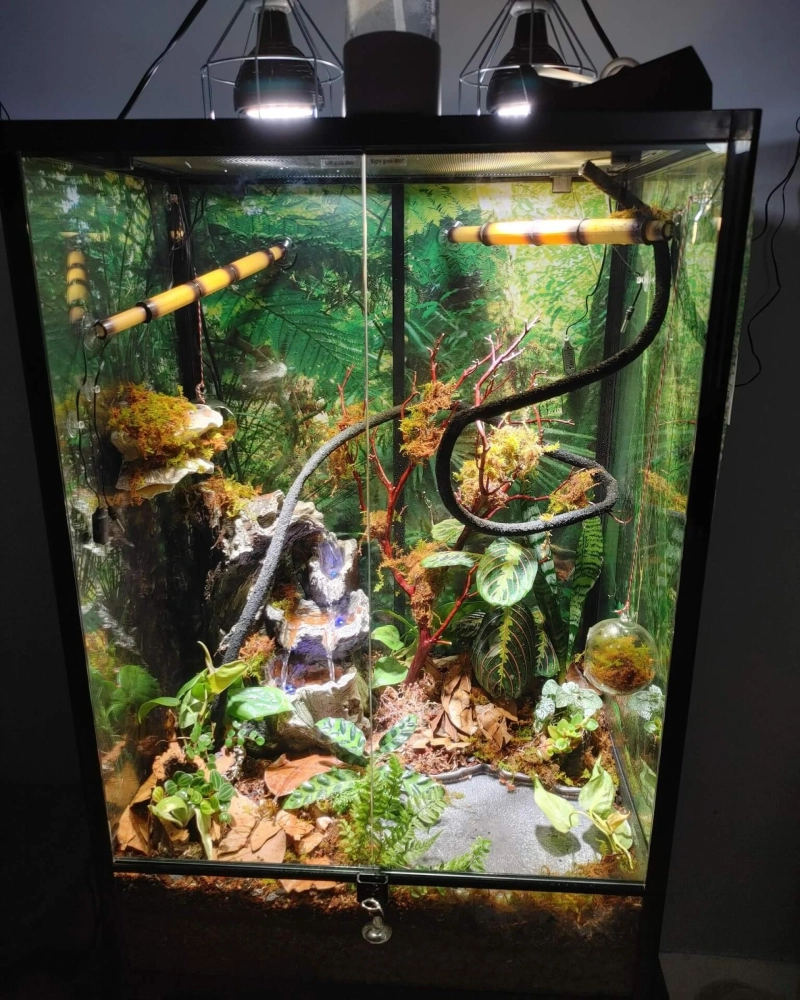Introduction:
As reptile enthusiasts, we understand the joy and responsibility that comes with providing a safe and comfortable habitat for our scaly companions. REPTIZOO, with over 15 years of experience in the industry, has established itself as a leading provider of high-quality and safe reptile supplies. In this guide, we will explore the art of building a reptile terrarium and the special considerations needed based on the type of reptile. Join us on this journey of creating a harmonious artificial habitat that replicates the natural world for your reptile friends.
Understanding High-Quality Reptile Habitats:
High-quality reptile habitats serve as a sanctuary for your reptiles, providing them with the essential elements they need to thrive. REPTIZOO's commitment to innovation, diversification, and premiumization ensures that their products meet the highest standards of quality and functionality. From terrariums and heating lamps to energy-saving lamps, thermostats, heat pads, and humidifiers, each item is carefully designed to cater to the specific needs of reptiles, ensuring their comfort, health, and well-being.
Building a Reptile Terrarium: Step by Step
1.Research the Reptile Species:
Different reptiles have varying habitat requirements. Research your chosen reptile species thoroughly to understand their natural habitat, temperature preferences, humidity needs, and behaviors. This information will guide you in creating a suitable artificial habitat.
2. Choose the Right Terrarium Size:
Terrarium size is crucial for your reptile's comfort. Consider the adult size of your reptile and select a terrarium that provides ample space for them to move, explore, and exhibit natural behaviors. REPTIZOO offers a range of terrarium sizes to accommodate reptiles of various sizes.
3. Select the Appropriate Substrate:
Substrate plays a vital role in maintaining proper humidity levels and facilitating natural behaviors such as burrowing and nesting. Choose a substrate that aligns with your reptile's needs, whether it's a natural substrate like coconut fiber or paper-based bedding.
4. Provide Suitable Lighting and Heating:
Reptiles rely on external heat sources and specific lighting requirements. REPTIZOO's heating lamps and energy-saving lamps are designed to provide the ideal temperature and lighting conditions for reptiles. Install a combination of UVB and basking lamps to mimic the sun's natural spectrum.
5. Maintain Optimal Temperature and Humidity:
Proper temperature and humidity are crucial for reptile health. Utilize thermostats and hygrometers to monitor and control these factors within the terrarium. REPTIZOO's thermostats and humidifiers are reliable tools to maintain the desired conditions.
6. Create Hiding Spots and Enrichment:
Reptiles require hiding spots to feel secure and reduce stress. Incorporate rocks, logs, and artificial plants to create a natural-looking environment. Enrichment items such as branches and climbing structures provide opportunities for exercise and mental stimulation.
7. Regular Maintenance and Monitoring:
Maintaining a clean and healthy terrarium is essential. Regularly clean the enclosure, change the substrate, and monitor temperature, humidity, and lighting levels. This ensures a comfortable and safe environment for your reptile.
The Takeaway:
Building a high-quality reptile terrarium is an art that requires knowledge, care, and the right supplies. With REPTIZOO's expertise and dedication to providing professional, innovative, and practical reptile supplies, you can create an artificial habitat that mirrors the natural world for your scaly friends. Remember to consider the specific needs of your reptile species and provide them with the appropriate heating, lighting, substrate, and enrichment. Let your love for reptiles guide you in creating a sanctuary that nurtures their well-being and allows them to thrive in their new home.


